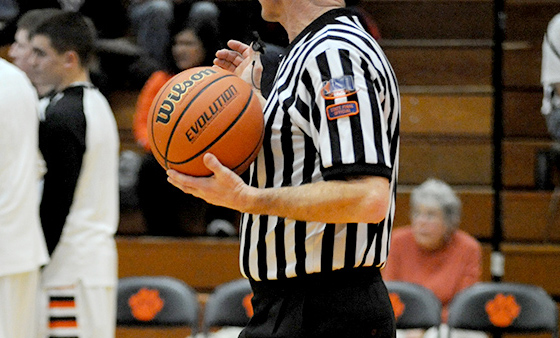Pac-12 pledges $3.9M to fund athlete health, wellness projects
 As a part of the Pac-12’s Student-Athlete Health and Well-Being Grant Program, the Conference selected seven research projects to fund this year, it announced this week. The research projects will explore important student-athlete health issues including head trauma, overuse and injury prevention, cardiovascular screening, thermal management and hydration, and mental health and total $3.9 million in funding.
As a part of the Pac-12’s Student-Athlete Health and Well-Being Grant Program, the Conference selected seven research projects to fund this year, it announced this week. The research projects will explore important student-athlete health issues including head trauma, overuse and injury prevention, cardiovascular screening, thermal management and hydration, and mental health and total $3.9 million in funding.
This is the second funding cycle of the Pac-12’s Student-Athlete Health and Well-Being Grant Program which commits roughly $3.5 million annually to research projects conducted at Pac-12 institutions that are designed to improve the health, general well-being, and safety of student-athletes at all Conference member institutions.
“The Pac-12 continues to aggressively seek solutions to serious problems that affect the health and safety of our student-athletes,” said Dr. David McAllister, chair of the Pac-12 Student-¬Athlete Health and Well-¬Being Board and associate head team physician at UCLA. “This Grant Program is an unprecedented collaboration between 12 leading universities with the unifying goal of making sports safer for the next generation, and we firmly believe that the projects selected this funding cycle will do just that.”
The Pac-12 Grant Program has made it a priority to fund cutting-edge research by pooling the collective expertise of its membership, which comprises some of the foremost research institutions in the world.
“The projects we’re funding this cycle address a diverse set of issues, all of which are extremely important to the health and well-being of student-athletes,” said Dan Nordquist, the Associate Vice President of Research Support and Operations at Washington State University and the chair of the Pac-12’s Research Grant Program Committee. “We look forward to seeing the results of these studies and putting what we learn into action to better the lives of current and future student-athletes.”
Doctors, athletic trainers, and research experts from all 12 Pac-12 institutions reviewed the projects and ultimately decided to fund seven projects to be conducted on four different Pac-12 campuses. The projects being funded this cycle include (with the lead university highlighted):
1. NCAA-Department of Defense Concussion Assessment, Research, and Education (CARE) Consortium Data Collection: Establishing a Research Infrastructure and Framework (Stanford)
- This project, co-funded by the NCAA, will create the first full-conference regional research hub of the landmark CARE Consortium. The Consortium is funded by a partnership of the U.S. Department of Defense Military Health System and the NCAA, and is a multi-site, longitudinal investigation of concussion and repetitive head impacts in NCAA athletes and military service academy cadets that addresses major gaps in the understanding of concussion. Through this project, agreed to in principal by the NCAA and Pac-12, each Pac-12 institution will be able to collect neurocognitive and neurobehavioral data on athletes at baseline, at the time a concussion occurs, and then at multiple time-points over the course of the year following an injury.
2. Health and Wellness: Assessing Student-Athlete Health and Performance (Colorado)
- This project proposes a comprehensive approach to optimize the academic, athletic, health, and wellness experience of student-athletes. Specifically, the project seeks to assess important indicators of student-athlete health and wellness, integrate key information within the Pac-12 Sports Injury Registry Management and Analytics Program, and implement and disseminate important best practices for sustainable student-athlete training and performance throughout the Pac-12.
3. Pac-12 Student-Athlete Project on Developing Coach Education (Washington)
- This project aims to develop evidence-based, easily scalable educational programs for college coaches about topics related to student-athlete health and safety, beginning with concussions.
4. Overuse Injuries/Injury Prevention: A Prospective Study to Improve Bone Health and Reduce Incidence of Bone Stress Injuries in Pac-12 Female Distance Runners (Stanford)
- The primary objective of this project is to improve the health of female collegiate distance runners, reduce the incidence and severity of bone stress injuries, and shorten recovery time. This will be accomplished with an active nutrition education program emphasizing the achievement of positive energy balance measured by increasing energy intake and/or reducing exercise energy expenditure.
5. Cardiovascular Screening in the Pac-12 Conference: Establishing Best Practices (Washington)
- Sudden cardiac death is the leading medical cause of death in college athletes and has been designated as a high priority area for research by the Pac-12. This study is designed to answer critical questions regarding screening for cardiovascular conditions that predispose athletes to sudden death by comparing the schools that screen with history and a physical to those that add an electrocardiogram. The study will compare conditions identified, total costs, costs per diagnosis, time lost from competition, and any adverse outcomes related to screening with each strategy.
6. Thermal Management for Athletes: Problems and Opportunities (Stanford)
- The Heller laboratory at Stanford has developed a unique technology that rapidly extracts heat from the core of the body. It has been used in a number of cases where athletes were showing signs of heat illness, and recovery was rapid. This upcoming project will include a telemetric study of changes in body temperature of athletes during practice and competition as a function of environmental conditions, as well as comparative studies of methods to achieve rapid recovery from hyperthermia and studies of the benefits of heat extraction in physical conditioning of female athletes.
7. Mental Health and Head Trauma: Brain Health in Male and Female Basketball Student-Athletes at the University of Utah (Utah)
- There is a need to better define the neurobiological, cognitive, and behavior changes in competitive athletes prone to head injury both pre- and post-injury. The aim of this study is to assess the association between concussive symptoms, mood states, cognitive performance, and brain changes in female and male basketball student-athletes and football student-athletes.
In the first funding cycle of the Grant Program, the Pac-12 funded the creation of a conference-wide sports injury database with the help of Presagia Sports, an Athlete Electronic Medical Record (EMR) platform. The database enables Conference doctors and athletic trainers to analyze the prevalence of sports injuries and conduct investigations on aspects of injury management such as prevention, treatment, and concussion assessment.
Also in the first funding cycle, the Grant Program funded a project from Oregon State titled “Injury Surveillance: How much is enough? Enhancing the precision of team injury estimates using detailed athlete exposure information” in conjunction with the advent of the conference-wide database. The results of this project will provide essential evidence that the Pac-12 can immediately use as a basis for deciding what level of athletic exposure data should be captured in order to harness the full potential of the new database.







